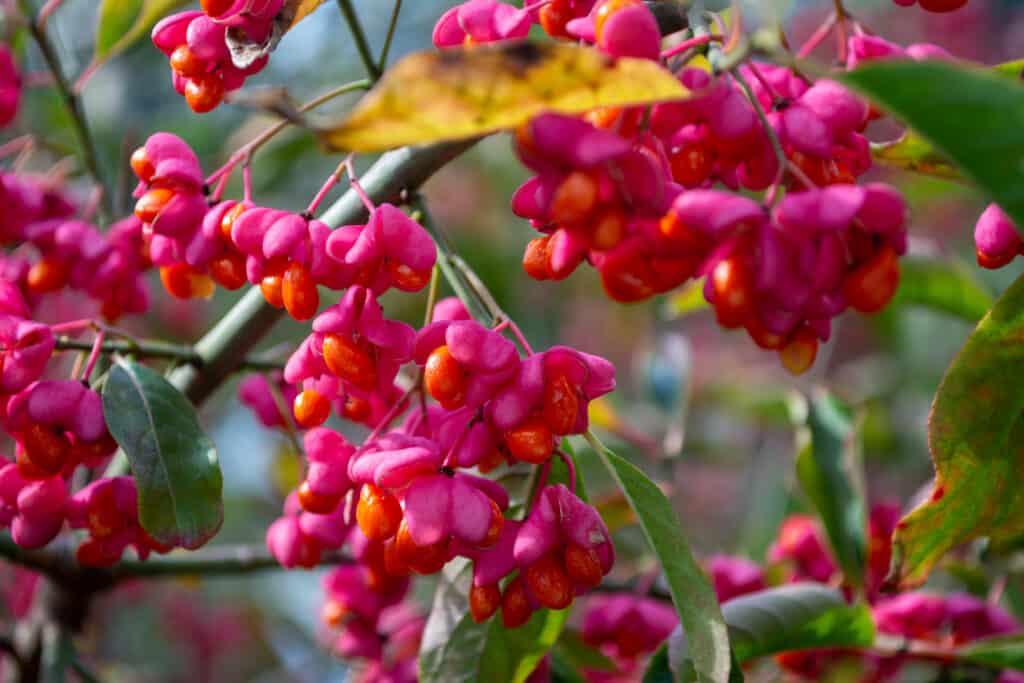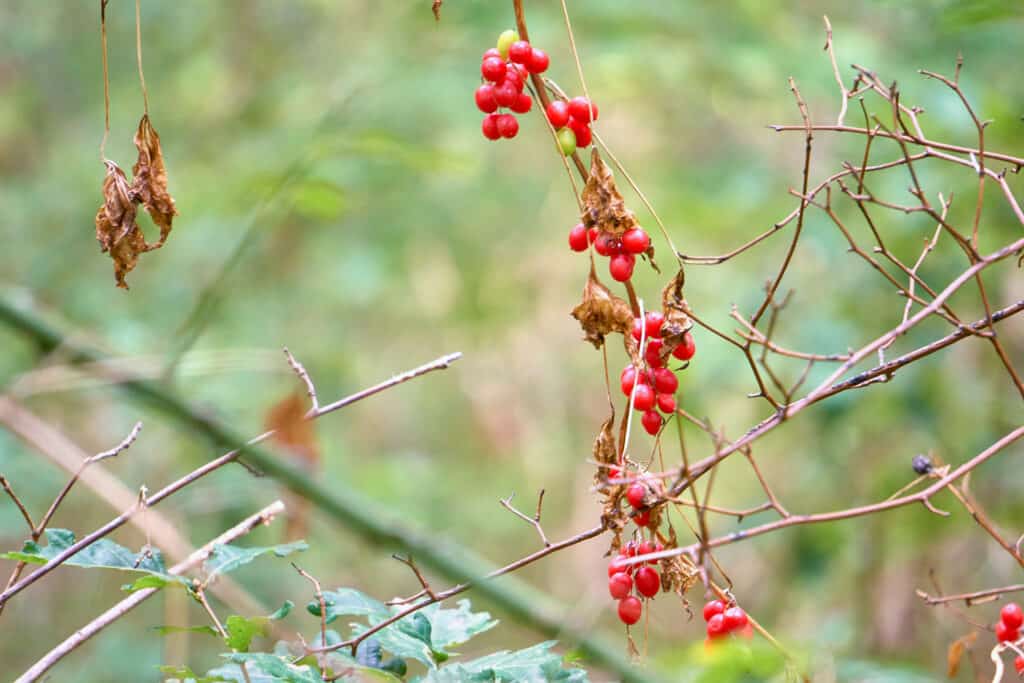If you’re taking a stroll through the country lanes of the Blackmore Vale this winter, here are just a few of the hedgerow plant species you might spot. Hedgerows provide an often diverse range
of trees and shrubs, making them a thriving habitat for all sorts of wildlife. At this time of year, berries are particularly tempting to birds, but not all berries are safe for them (or humans) to eat.

“I coulde never learne an Englishe name for it. The Duche men call it in Netherlande, spilboome, that is, spindel tree, because they use to make spindels of it in that countrey, and me thynke
it maye be so well named in English seying we have no other name. … I know no good propertie that this tree hath, saving only it is good to make spindels and brid of cages ” [bird cages]. William Turner’s ‘Newe Herball’, 1551
Hawthorn
Hawthorn (Crataegus monogyny) is one of the staple shrubs found in our autumn and winter hedgerows, producing deep red fruits resembling very small apples, called ‘haws’. These fruits are enjoyed by many birds including hawfinches, thrushes, fieldfares and redwings, as well as a range of small mammals. Waxwings will also enjoy any haws that are left on the tree in December or January. Common hawthorn is also a rich habitat for all kinds of wildlife beyond birds, from hawthorn shield bugs, to wood mice and slow worms that shelter in the thorny thickets.

Thomas the Rhymer, the thirteenth century Scottish mystic and poet met the Faery Queen by a hawthorn from which a cuckoo was calling. She led him into the Faery Underworld for a brief sojourn. Upon reemerging into the world of mortals he found he had been absent for seven years.
Spindle
One of the most striking, vibrant berries you can spot in early winter can be found on this small hedgerow and woodland tree. The berries that appear on spindle (Euonymus europaeus) are bright pink with bright orange seeds inside; they may look exotic, but this is a native plant in Britain. The berries are toxic to humans, but enjoyed by a range of wildlife including mice, foxes and birds such as house sparrows.
Spindle is an ancient woodland indicator; its presence in woodland settings may mean you are in a particularly special habitat. Ancient woodlands are woods that have continuously been on the same site since 1600 or before, creating a specific ecosystem with a host of plants and animals. One such woodland can be found at Hibbitts Woods, a Dorset Wildlife Trust nature reserve near Yeovil.

Culpepper the herbalist said “briony” were “furiously martial plants”, imbued with the warlike spirit of orange twinkling Mars in the night sky
Black Bryony
Take a look at an autumn or winter hedgerow and you might see stems of bright red berries climbing up the trees and shrubs. This may well be black bryony (Tamus communis), our only native member of the yam family. Despite this, it is a poisonous plant. Its leaves are glossy and heart-shaped, and in summer it flowers with yellow- green, six-petalled blooms. Despite their names and similar hedgerow climbing habits, white bryony (Bryonia dioica) is not
a relative of black bryony. The poisonous berries are not of much value to wildlife, though the summer flowers are visited by pollinators.

